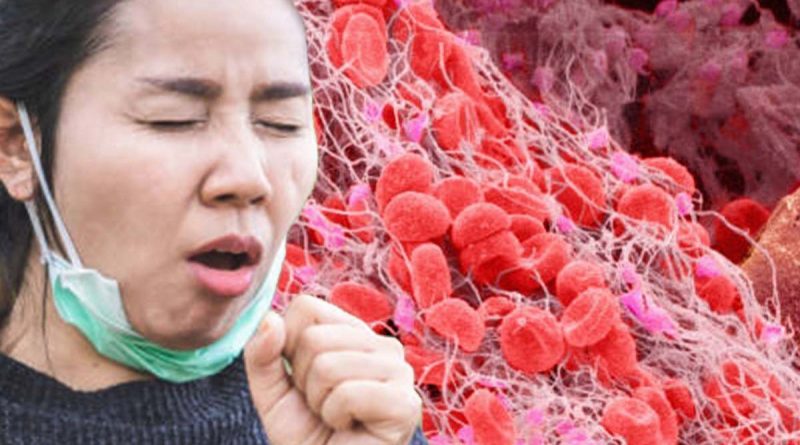Blood clot symptoms: The sign in your cough that can indicate a pulmonary embolism
British Heart Foundation: Understanding blood clots
We use your sign-up to provide content in ways you’ve consented to and to improve our understanding of you. This may include adverts from us and 3rd parties based on our understanding. You can unsubscribe at any time. More info
The NHS explains deep vein thrombosis (DVT) is a blood clot that develops within a deep vein in the body, usually in the leg. It explains: “Blood clots that develop in a vein are also known as venous thrombosis. DVT usually occurs in a deep leg vein, a larger vein that runs through the muscles of the calf and the thigh.”
Stop the Clot says deep vein thrombosis (DVT) occurs when a blood clot forms in one of the deep veins of your body, usually in your legs, but sometimes in your arm.
The organisation says signs and symptoms of a DVT include:
- Swelling, usually in one leg (or arm)
- Leg pain or tenderness often described as a cramp or Charley horse
- Reddish or bluish skin discoloration
- Leg (or arm) warm to touch.
It states: “Contact your doctor as soon as you can if you have any of these symptoms, because you may need treatment right away.”

The Mayo Clinic explains deep vein thrombosis can be serious because blood clots in the veins can break loose.
It says: “The clots can then travel through the bloodstream and get stuck in the lungs, blocking blood flow (pulmonary embolism). When DVT and pulmonary embolism occur together, it’s called venous thromboembolism (VTE).”
Stop the Clot says clots can break off from a DVT and travel to the lung, causing a pulmonary embolism (PE), which can be fatal.
The signs and symptoms of a PE include:
- Sudden shortness of breath
- Chest pain-sharp, stabbing; may get worse with deep breath
- Rapid heart rate
- Unexplained cough, sometimes with bloody mucus.
The NHS says: “If a GP thinks you’ve got a pulmonary embolism, you’ll be sent to hospital for further tests and treatment.
“At hospital, you’ll probably be given an injection of anticoagulant medicine before you get any test results.”
Some risk factors put certain people at higher risk for developing a blood clot. Sometimes, a blood clot in a vein can occur with no apparent underlying risk factor.
Blood clots become more common as people get older, especially when they are over age 65. Moreover, you can be at higher risk if you have a family history of blood clots.
Risk factors include if you are staying in or recently left hospital, especially if you cannot move around much after an operation.
If you are at a high risk of blood clots after having been in hospital follow the advice of your care team about preventing clots.
“This may involve wearing stockings that improve your blood flow or taking medicine to reduce the risk of clot,” according to the NHS.
Other risk factors include if you are overweight or using combined hormonal contraception, such as the combined pill.

If you are pregnant or have just had a baby, your risk is also higher. Similarly, if you have an inflammatory condition such as Crohn’s disease or rheumatoid arthritis, this can increase your risk of clots.
If you are at higher risk you should not drink lots of alcohol as this can make you dehydrated, and more prone to clots.
If you smoke it also increases your risk. Smoking affects blood clotting and circulation, which can increase your risk.
Source: Read Full Article



